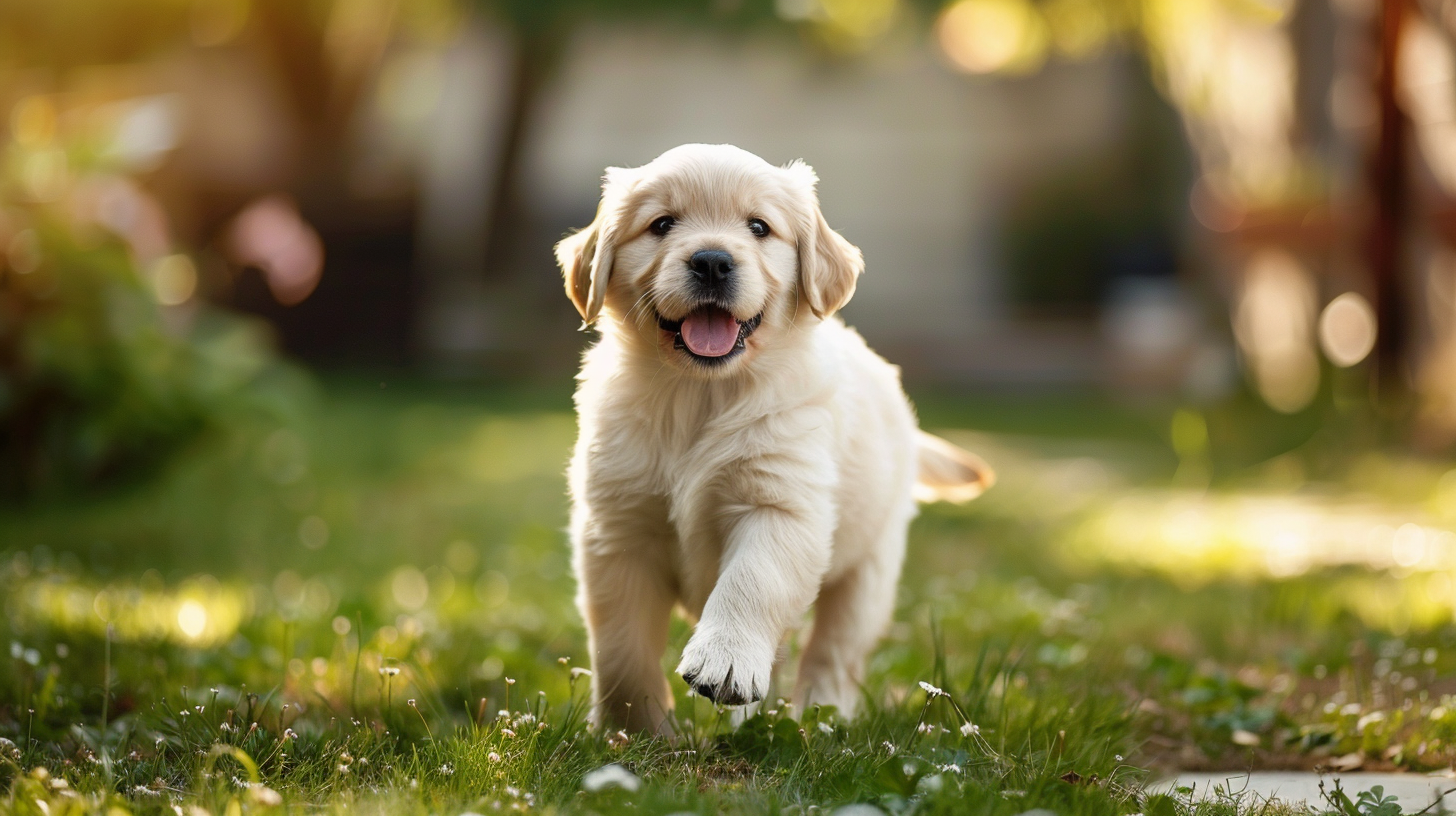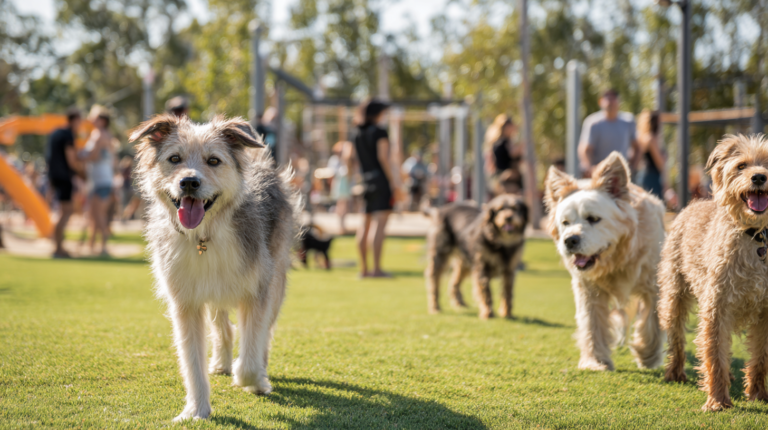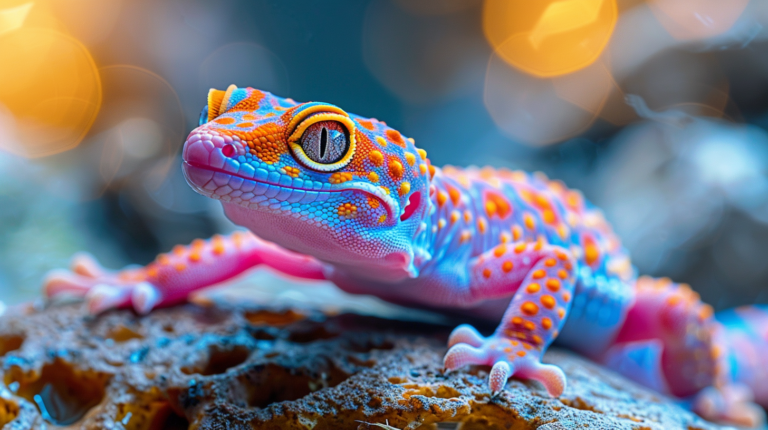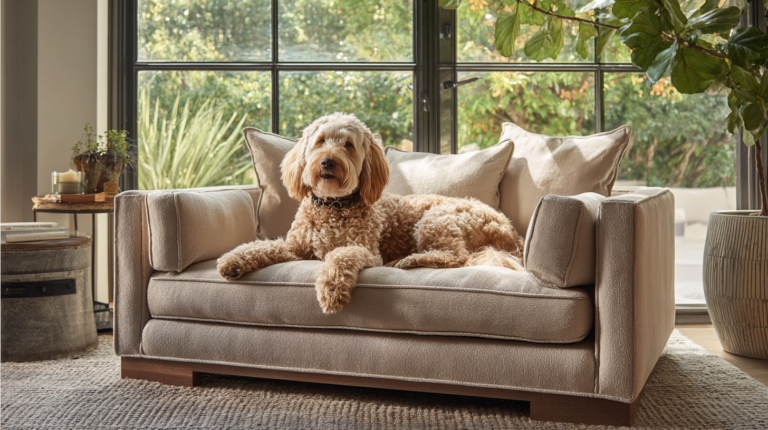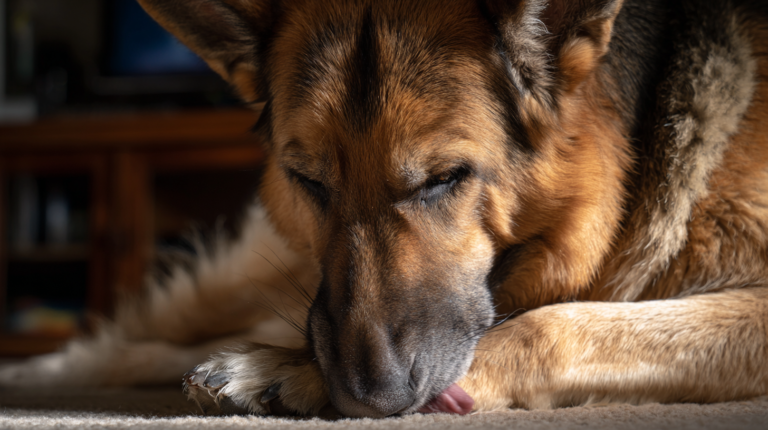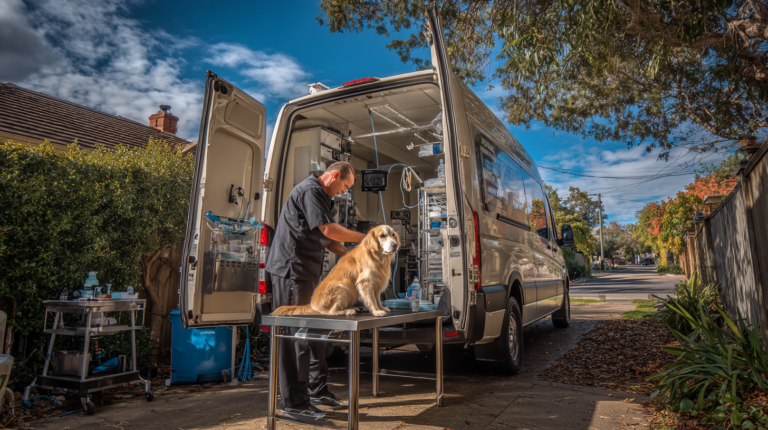Discover 5 proven puppy potty training tips that veterinarians recommend for faster results. Our comprehensive guide helps pet parents establish reliable bathroom habits.
Table of Contents
Bringing home a new puppy is exciting, but the reality of puppy potty training can quickly become overwhelming. Whether you’re a first-time pet parent or adding a new furry member to your family, establishing proper bathroom habits is crucial for a harmonious household. This comprehensive guide will walk you through the most effective puppy potty training methods that veterinarians and professional trainers recommend, helping you and your puppy succeed with minimal stress and mess.
Understanding Your Puppy’s Bathroom Needs
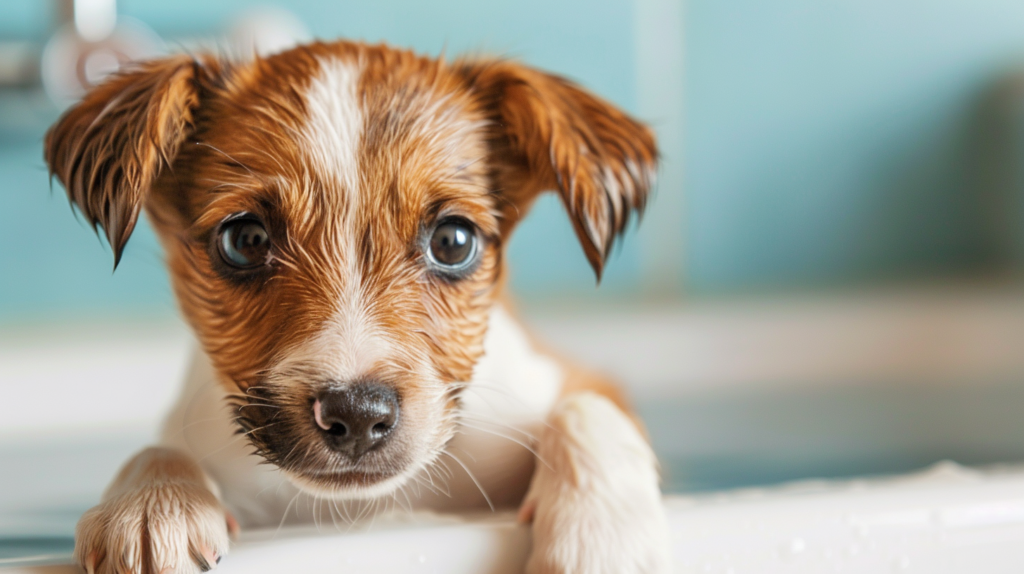
Before diving into puppy potty training techniques, it’s essential to understand the biological factors that influence your puppy’s bathroom habits. Puppies have small bladders and limited bladder control until they’re about 4-6 months old. According to veterinary research, puppies can typically “hold it” for about one hour per month of age, plus one. This means:
- A 2-month-old puppy can hold it for approximately 3 hours
- A 3-month-old puppy can hold it for approximately 4 hours
- A 4-month-old puppy can hold it for approximately 5 hours
A study published in the Journal of Veterinary Behavior found that puppies who receive consistent potty training from 8-12 weeks of age are 80% more likely to develop reliable bathroom habits by 6 months compared to puppies whose training begins later.
Dr. Sarah Collins, a veterinary behaviorist with over 15 years of experience, explains: “Puppies are naturally inclined to keep their sleeping areas clean. We can use this instinct to our advantage during potty training by clearly differentiating rest areas from elimination areas.”
Factors Affecting Puppy Potty Training Success
Several factors can influence how quickly your puppy learns proper bathroom habits:
- Breed size: Smaller breeds have smaller bladders and higher metabolisms, often requiring more frequent bathroom breaks.
- Previous living conditions: Puppies from reputable breeders who begin early potty training often adjust more quickly.
- Diet and feeding schedule: Regular, consistent feeding times help establish predictable elimination patterns.
- Age: Younger puppies have less physical control over their bladders and bowels.
- Health status: Certain medical conditions can affect bathroom habits and training success.
When to Start Potty Training Your Puppy

The optimal time to begin puppy potty training is between 8-12 weeks of age. At this stage, puppies are developing control over their bladder and bowel movements while remaining highly receptive to new learning experiences.
Research from the American Veterinary Society of Animal Behavior indicates that puppies in this age range form neural connections up to three times faster than adult dogs, making it an ideal period for establishing lasting habits.
Important: While early training is beneficial, realistic expectations are crucial. Complete reliability typically isn’t achieved until 4-6 months of age for most puppies, and some smaller breeds may take up to a year to become fully reliable.
Tip #1: Create a Consistent Bathroom Schedule
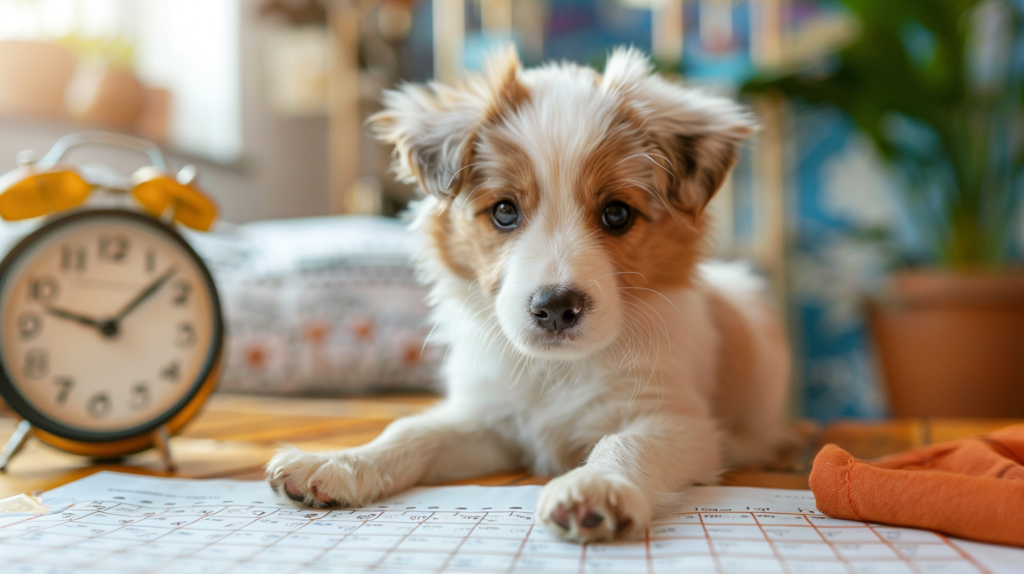
Consistency is perhaps the most critical element of successful puppy potty training. Establishing a predictable routine helps your puppy learn when and where elimination should occur.
Recommended Potty Schedule for Puppies
| Age | Daytime Frequency | Nighttime Breaks |
| 8-10 weeks | Every 30-60 minutes | 1-2 times |
| 10-12 weeks | Every 1-2 hours | 1 time |
| 3-4 months | Every 2-3 hours | Usually sleeps through |
| 4-6 months | Every 3-4 hours | sleeps through |
| 6+ months | Every 4-6 hours | sleeps through |
Key Times to Take Your Puppy Outside
Your schedule should include taking your puppy outside during these critical times:
- First thing in the morning: Take your puppy outside immediately after waking up.
- After naps: Puppies typically need to eliminate after sleeping.
- After playtime: Physical activity stimulates the digestive system.
- After meals: Typically 15-30 minutes after eating.
- Before bedtime: A final bathroom break helps prevent nighttime accidents.
- During the night: Young puppies may need 1-2 nighttime bathroom breaks.
Professional dog trainer Emma Rodriguez emphasizes: “Sticking to a consistent schedule is the foundation of successful potty training. When puppies can predict when they’ll go outside, they’re more likely to hold it until those designated times.”
Tracking Your Puppy’s Progress
Creating a potty training log can help you identify patterns and track progress. Your log should include:
- Times of successful outdoor eliminations
- Accident locations and times
- Feeding times
- Water intake
- Activity level throughout the day
This information helps you refine your puppy’s schedule based on their individual needs and patterns.
Tip #2: Use Positive Reinforcement Techniques

Positive reinforcement—rewarding desired behaviors—is significantly more effective than punishment for puppy potty training. A 2018 study published in the Journal of Veterinary Behavior found that puppies trained with positive reinforcement methods learned proper elimination behaviors 43% faster than those trained with punishment-based methods.
Effective Reward Systems
- Immediate treats: Have small, high-value treats ready to give your puppy immediately after they eliminate outdoors.
- Verbal praise: Use an enthusiastic, consistent phrase like “Good potty!” each time.
- Physical affection: Gentle petting or scratching your puppy’s favorite spot reinforces the positive association.
- Play time: A quick game with a favorite toy can be an excellent reward.
Dr. James Miller, canine behavior specialist, advises: “The reward must come within 3 seconds of the desired behavior for the puppy to make the connection. Always carry treats with you during potty breaks and reward immediately after your puppy finishes eliminating.”
Creating a Potty Training Command
Teaching your puppy a specific command for elimination, such as “go potty” or “do your business,” can be incredibly helpful. To establish this command:
- Take your puppy to their designated potty area.
- Say your chosen command clearly and calmly.
- Wait for them to eliminate.
- When they do, immediately praise and reward them.
- Repeat consistently with each potty break.
Over time, your puppy will associate the command with the action, which can be particularly useful during bad weather or when traveling.
Tip #3: Establish a Designated Potty Area
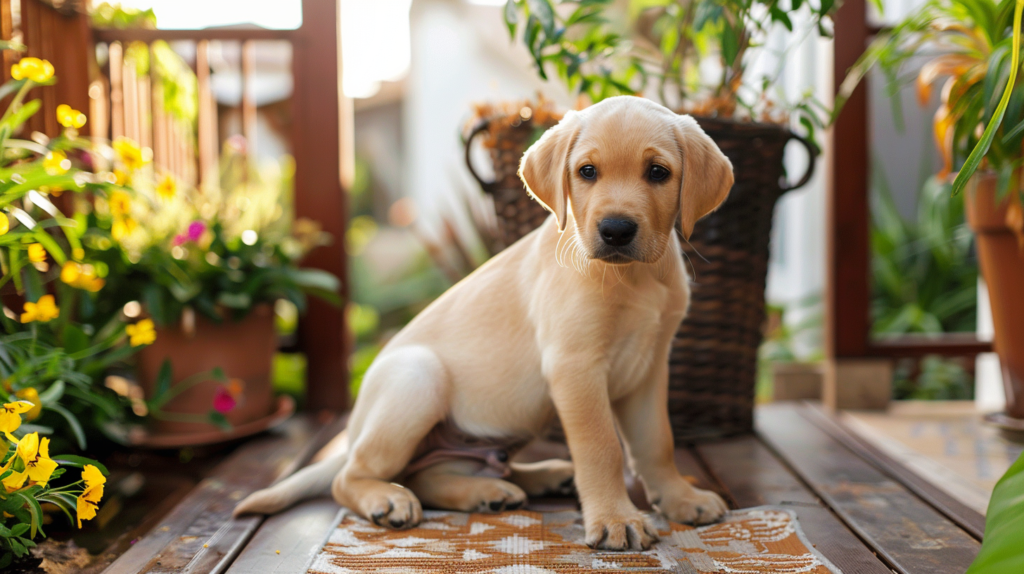
Designating a specific area for elimination helps your puppy understand where they should go, reducing confusion and speeding up the training process.
Selecting the Ideal Potty Area
When choosing your puppy’s potty area, consider these factors:
- Accessibility: The area should be easy for your puppy to reach quickly.
- Limited distractions: Especially during the early training phases, choose a relatively quiet area.
- Weather protection: If possible, select an area with some shelter from extreme weather.
- Surface type: Many puppies develop preferences for certain surfaces (grass, gravel, mulch, etc.).
Indoor Options for Apartment Dwellers or Special Circumstances
For those living in apartments or during extreme weather conditions, consider these indoor potty solutions:
- Puppy pads: Absorbent pads that can be placed in a consistent location.
- Indoor grass patches: Real or artificial grass in trays that provide a more natural surface.
- Litter boxes: Some smaller breeds can be trained to use dog-specific litter boxes.
- Potty bells: Train your puppy to ring bells when they need to go out.
A recent survey of urban dog owners found that 67% used some form of indoor potty option during the training phase, with 78% successfully transitioning their puppies to exclusively outdoor elimination by 6 months of age.
Transitioning from Indoor to Outdoor Potty Areas
If you’re using indoor potty options temporarily, follow these steps to transition to outdoor elimination:
- Gradually move the indoor potty option closer to the door.
- Once your puppy is consistently using it near the door, move it just outside.
- Slowly move it to your desired permanent potty area.
- Reduce the size of the indoor option while increasing outdoor trips.
- Remove the indoor option completely once your puppy is reliably eliminating outdoors.
Tip #4: Watch for Warning Signs and Prevention
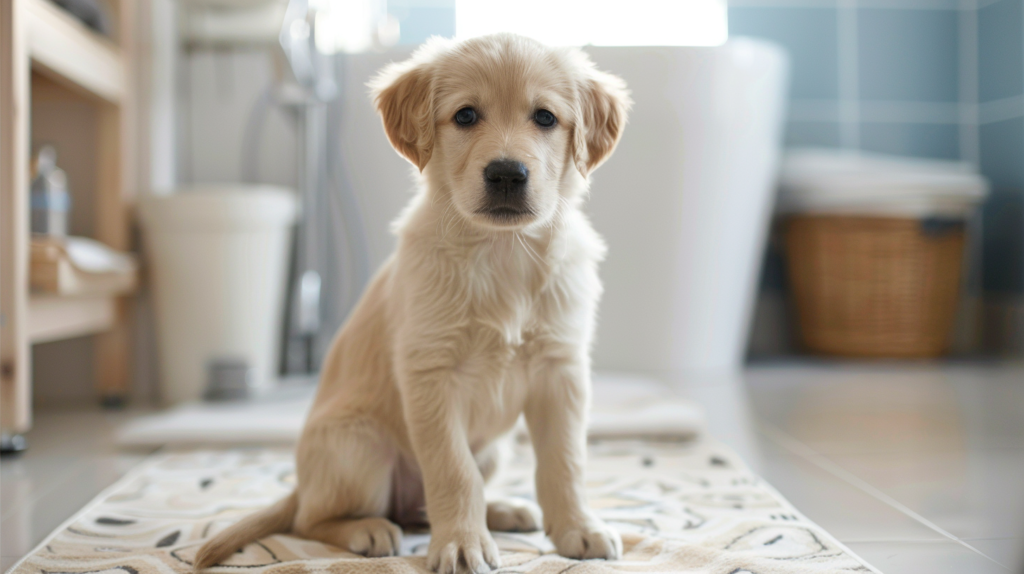
Preventing accidents is much easier than correcting them. Learning to recognize your puppy’s pre-elimination signals is crucial for successful puppy potty training.
Common Pre-Potty Behaviors
Most puppies exhibit clear signals before they need to eliminate. Watch for:
- Circling or pacing: Moving in circles or pacing restlessly
- Sniffing the ground intently: Searching for an appropriate spot
- Whining or barking: Vocalizing their need
- Scratching at the door: Trying to get outside
- Sudden interruption of activity: Stopping play or walking abruptly
- Returning to a previous accident spot: Drawn to the scent
- Restlessness: Unable to settle or relax
According to a survey of professional dog trainers, 92% reported that teaching owners to recognize these warning signs was the single most effective way to reduce in-home accidents.
Supervision Techniques for Prevention
Constant supervision during the early training phases is essential. Consider these proven techniques:
- Tethering: Keeping your puppy on a leash attached to you during the day
- Baby gates: Limiting access to areas of your home
- Playpens: Creating safe, confined spaces
- Crate training: Using a properly sized crate for brief periods
Canine behavior expert Dr. Maria Sanchez notes: “The majority of potty training failures stem from giving puppies too much freedom too soon. Supervised confinement isn’t punishment—it’s a tool that sets your puppy up for success by preventing accidents and reinforcing desired behaviors.”
The Proper Use of Crates in Potty Training
Crates can be valuable tools in puppy potty training when used correctly. Puppies naturally avoid soiling their sleeping areas, making a properly sized crate an effective training aid.
For appropriate crate training:
- The crate should be just large enough for your puppy to stand up, turn around, and lie down comfortably.
- Never use the crate as punishment.
- Limit crate time to age-appropriate intervals (remember the one hour per month of age + 1 rule).
- Always take your puppy directly outside after crate time.
- Make the crate a positive, comfortable space with appropriate bedding and toys.
A study by the American Kennel Club found that puppies trained with appropriate crate use were fully potty trained an average of 6 weeks faster than those without crate training.
Tip #5: Handle Accidents Properly
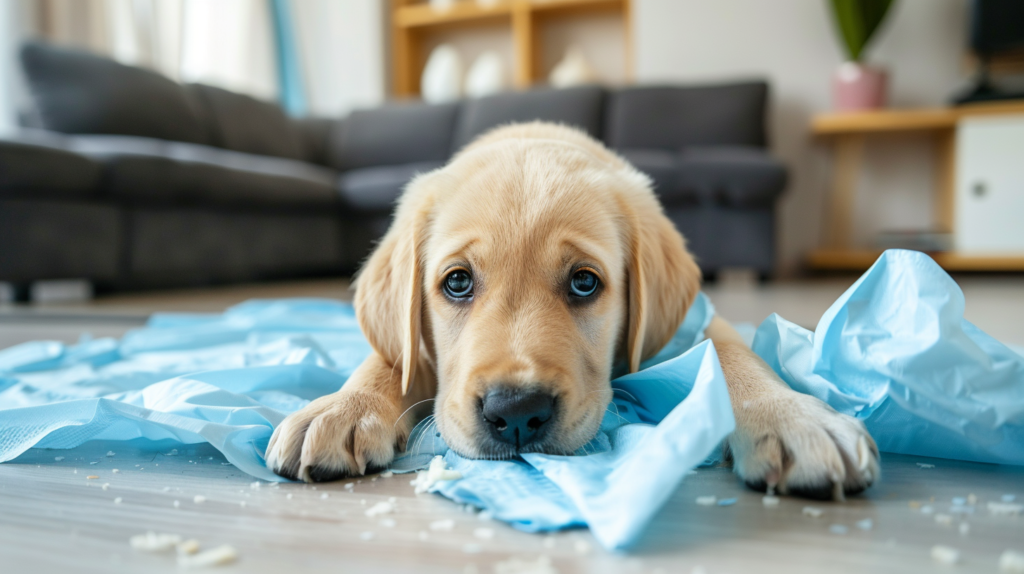
Even with the best puppy potty training system, accidents will happen. How you respond to these incidents significantly impacts training success.
The Do’s and Don’ts of Accident Response
DO:
- Interrupt accidents calmly if caught in the act
- Take your puppy immediately outside to finish
- Clean accidents thoroughly with enzyme-based cleaners
- Review your supervision and schedule for needed adjustments
- Remain patient and consistent
DON’T:
- Punish or scold your puppy for accidents
- Rub your puppy’s nose in the mess
- Clean with ammonia-based products (they smell like urine to dogs)
- Restrict water access (can lead to health problems)
- Allow unsupervised access to areas with previous accidents
Veterinary behaviorist Dr. Patricia McConnell explains: “Punishment doesn’t teach your puppy where to eliminate—it only teaches them to fear eliminating in your presence, which can lead to hidden accidents and prolonged training times.”
Proper Cleaning Techniques
Thorough cleaning of accident areas is essential for preventing repeat incidents. Dogs have approximately 300 million olfactory receptors compared to humans’ 6 million, making them incredibly sensitive to lingering scents.
For effective cleanup:
- Blot up as much of the mess as possible with paper towels.
- Apply a high-quality enzyme-based cleaner specifically designed for pet messes.
- Allow the area to soak according to product instructions.
- Blot again and let air dry completely.
- Consider using a blacklight to detect any missed spots.
Research shows that puppies are 70% more likely to eliminate in areas where they can detect previous accident scents, making thorough cleaning crucial to training success.
Advanced Potty Training Methods
Once your puppy grasps the basics, consider these advanced techniques to strengthen their training:
Bell Training
Teaching your puppy to ring a bell when they need to go outside provides clear communication and prevents accidents:
- Hang bells on or near the door at your puppy’s nose level.
- Before each potty break, gently touch your puppy’s paw or nose to the bells.
- Immediately open the door and take them outside.
- When they eliminate, offer enthusiastic praise and treats.
- With consistency, your puppy will learn to ring the bells independently.
Extending Time Between Potty Breaks
As your puppy matures, gradually increase the time between bathroom breaks:
- Add 15-30 minutes to your current schedule.
- Watch carefully for signs of distress or accidents.
- If successful, maintain this schedule for several days before extending again.
- If accidents occur, return to the previous schedule for another week.
A survey of 1,200 dog owners found that 76% of puppies could comfortably hold their bladders for 4-6 hours by 6 months of age when gradually trained with this method.
Nighttime Training
Achieving a full night’s sleep is a milestone many puppy parents eagerly anticipate:
- Remove water 2-3 hours before bedtime (unless medically contraindicated).
- Ensure a thorough elimination immediately before bed.
- Set alarms for age-appropriate nighttime breaks.
- Keep nighttime potty breaks brief and businesslike.
- Gradually extend time between nighttime breaks as your puppy demonstrates capability.
According to the American Veterinary Medical Association, most puppies can sleep through the night without a bathroom break by 16-20 weeks of age, though individual variation is common.
Troubleshooting Common Potty Training Issues
Even with perfect implementation, challenges can arise. Here’s how to address common puppy potty training problems:
Regression During Adolescence
Many puppies experience a temporary regression in potty training between 6-14 months as they enter adolescence:
- Return to a more structured schedule temporarily.
- Increase supervision and reduce freedom.
- Reinforce successful elimination with high-value rewards.
- Be patient—this phase typically resolves within a few weeks.
Submissive or Excitement Urination
Some puppies urinate when excited or showing submission, which is not a potty training issue but a behavioral one:
- Keep greetings low-key and calm.
- Avoid looming over or reaching over your puppy’s head.
- Greet your puppy outdoors when possible.
- Never punish this behavior, as it will worsen the problem.
- Consult with a veterinarian if the issue persists beyond 6 months of age.
Medical Issues That May Affect Potty Training
Certain health conditions can disrupt otherwise successful potty training:
- Urinary tract infections: Watch for frequent urination, straining, or blood in urine.
- Gastrointestinal issues: Diarrhea or constipation can disrupt normal patterns.
- Dietary sensitivities: Certain ingredients may cause digestive upset.
- Parasites: Intestinal parasites can cause urgency and irregularity.
Veterinarian Dr. Jason Kim advises: “Any sudden change in a well-established potty routine warrants a veterinary check-up. Early intervention for medical issues can prevent both health complications and training setbacks.”
Handling Environmental Changes
Changes in routine, environment, or household can temporarily affect potty training:
- Moving to a new home: Return to basics temporarily and establish a new potty area quickly.
- Schedule changes: Gradually adjust your puppy’s schedule if your routine must change.
- New family members: Maintain consistent training during periods of household change.
- Weather changes: Some puppies resist eliminating in rain, snow, or extreme temperatures.
For weather-resistant puppies, dog trainer Lisa Gonzalez suggests: “Create a sheltered outdoor area, or consider temporary indoor options during extreme weather. Never force a fearful puppy outside in frightening conditions, as this can create long-term elimination issues.”
Frequently Asked Questions
How long does it typically take to fully potty train a puppy?
Most puppies achieve reliable potty training between 4-6 months of age, though complete reliability might take longer. Smaller breeds often take longer to train due to smaller bladder size and higher metabolism. A survey by the Association of Professional Dog Trainers found that the average time to complete potty training across all breeds was 18 weeks, with a range of 12-24 weeks depending on consistency of training, breed, and individual factors.
Should I use puppy pads or go straight to outdoor training?
This depends on your living situation and schedule. Direct outdoor training typically results in faster overall training success, but puppy pads can be valuable for apartment dwellers or during extreme weather. If you do use pads, place them near the door and gradually move them outside to facilitate the transition to outdoor elimination.
My puppy was doing well but suddenly started having accidents again. What happened?
Temporary regression is common and can be caused by several factors:
- Adolescent development (6-14 months)
- Schedule changes
- Environmental changes
- Medical issues
- Insufficient cleaning of previous accident areas
Return to basics with a consistent schedule and supervision, and consult your veterinarian to rule out medical causes if the regression persists more than a few days.
How do I potty train my puppy if I work full-time?
Working pet parents can successfully potty train puppies by:
- Arranging mid-day visits from a dog walker or neighbor
- Using a properly-sized exercise pen with designated potty area
- Considering doggy daycare during the critical training period
- Using a combination of crate training and confined area with potty pads
- Adjusting work schedule temporarily if possible during the initial training phase
Is it normal for my puppy to have accidents even after being outside?
Yes, this is common, especially in young puppies. Often, they become distracted outdoors and don’t fully empty their bladders. Try extending outdoor time, reducing distractions in the potty area, and using your potty command consistently. Some puppies also need more time to recognize the feeling of needing to eliminate.
How do I potty train during the winter months?
Cold weather training can be challenging. Try these approaches:
- Clear a sheltered potty area free of deep snow
- Use positive reinforcement and high-value treats specifically for cold-weather potty breaks
- Keep potty breaks brief but ensure complete elimination
- Consider booties or a coat for sensitive puppies
- Temporarily use indoor options during extreme conditions
For more expert pet care tips and product recommendations, visit BlithePet.com — your trusted source for pet wellness.
Conclusion
Puppy potty training requires patience, consistency, and positive reinforcement, but the results are well worth the effort. By implementing these five proven techniques—creating a consistent schedule, using positive reinforcement, establishing a designated potty area, watching for warning signs, and properly handling accidents—you’ll build a foundation for a lifetime of good bathroom habits.
Remember that every puppy is unique, and some may take longer than others to achieve full reliability. The key is remaining patient and consistent while celebrating the small victories along the way. With time and proper training, your puppy will develop the habits that make for a clean, harmonious household.
Have a similar experience with your puppy? Share it in the comments below!

